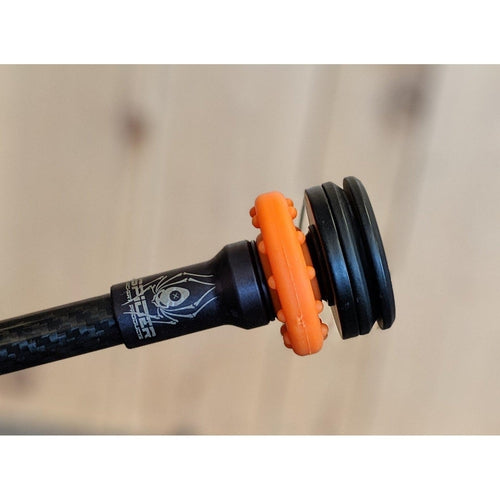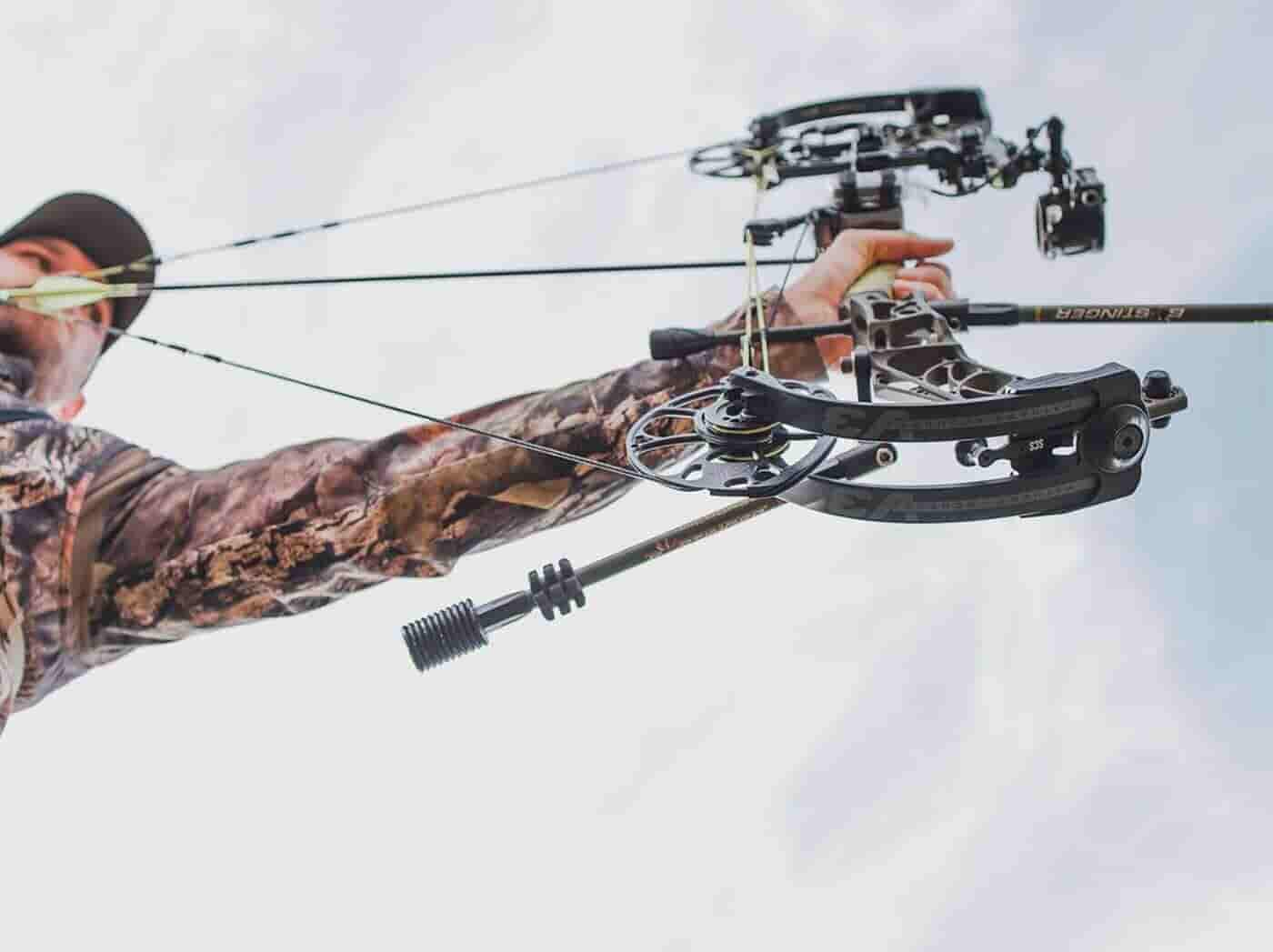Improve Your Accuracy: The Duty of Archery Stabilizers
Improve Your Accuracy: The Duty of Archery Stabilizers
Blog Article
Master the Art of Archery: Recognizing the Significance of a Stabilizer in Your Arrangement
Whether one is a skilled archer or simply beginning their journey, the significance of a stabilizer in their arrangement can not be overstated. By recognizing the benefits of utilizing a stabilizer, considering the right variables when selecting one, and effectively installing and readjusting it, archers can elevate their skills to brand-new elevations.
The Function of a Stabilizer in Archery
A stabilizer plays a vital role in archery by boosting balance and decreasing vibrations throughout the shot. A stabilizer assists to combat these vibrations by absorbing and dissipating the energy (archery stabilizer).
Among the major benefits of a stabilizer is its capability to boost equilibrium. When an archer holds a bow, it can be testing to preserve a steady aim. The weight of the stabilizer aids to distribute the weight equally, decreasing the strain on the archer's arm and boosting stability. This allows the archer to concentrate on their aim and execute an extra exact shot.
In enhancement to equilibrium, a stabilizer additionally aids to lower torque. The weight and style of a stabilizer neutralize this rotation, ensuring a more consistent and accurate shot.
Advantages of Utilizing a Stabilizer
The application of a stabilizer in archery offers various benefits that improve an archer's performance and total capturing experience. To start with, a stabilizer assists to reduce the vibrations produced upon release of the arrowhead. These resonances can create the acquiesce torque or twist, leading to inaccurate shots. By soaking up and wetting these resonances, the stabilizer improves the security of the bow, enabling for even more specific and consistent shots.
Secondly, a stabilizer helps to balance the bow by including weight to the front end. This weight circulation combats the all-natural tendency of the bow to tip ahead upon launch, reducing the amount of motion and boosting the archer's capacity to keep aim on target.

Finally, a stabilizer can also act as a shock absorber, minimizing the shock and recoil experienced upon launch. This not only enhances the convenience of capturing but also lessens the risk of injury or pressure on the archer's body.
Just How a Stabilizer Improves Accuracy
Enhancing the precision of an archer's shots, a stabilizer plays a crucial function in enhancing total efficiency. archery stabilizer. By adding stability to the bow, a stabilizer helps minimize the unwanted activity and vibration that can occur throughout a shot. This reduction in motion permits the archer to keep a steady purpose, resulting in more regular and precise shots

Additionally, a stabilizer helps to moisten vibrations that occur upon release. These resonances can cause the acquiesce shake, influencing the arrow's trajectory and precision. By soaking up and dissipating these resonances, a stabilizer helps to keep the bow's stability and guarantee a smooth and exact shot.
In addition, a stabilizer can additionally aid in balancing the weight circulation of the bow (archery stabilizer). By adding weight to the front of the bow, a stabilizer aids to balance the weight of accessories, such as quivers or sights, which may be connected to the bow. This balanced weight distribution see this website aids the archer keep a constant and controlled shooting setting, resulting in enhanced accuracy
Aspects to Consider When Choosing a Stabilizer
When picking a stabilizer for your bow, it is essential to take into consideration several elements that will add to its total effectiveness and viability for your private capturing design. The initial variable to think about is the size of the stabilizer. Stabilizers can be found in different sizes, varying from short to long. Longer stabilizers normally offer a lot more stability and equilibrium, yet they can likewise be heavier and a lot more tough to maneuver. Much shorter stabilizers, on the other hand, provide much better maneuverability however might sacrifice some security.
Another variable to take into consideration is the weight of the stabilizer. The weight of the stabilizer can influence the balance of your bow.
Additionally, it is essential to consider the design and construction of the stabilizer. Some stabilizers have flexible features, such as adjustable size or flexible weights, which enable you to personalize the stabilizer to your certain demands. The products used in the building of the stabilizer can additionally influence its performance. Carbon fiber stabilizers are resilient and lightweight, while aluminum stabilizers provide an equilibrium in between weight and rigidness.
Various stabilizers might work much better for certain shooting designs, such as target capturing or searching. It is a good idea to seek advice from with knowledgeable archers or experts to establish which stabilizer will best suit your specific needs.
Tips for Correctly Setting Up and Readjusting a Stabilizer
Longer stabilizers give even more stability however can be much less maneuverable, while much shorter stabilizers offer increased maneuverability but might give up security. When you have read this chosen the proper length, connect the stabilizer to the bow making use of the provided mounting hardware. Ensure that the stabilizer is firmly fastened and aligned with the bow's riser.
After setting up the stabilizer, it is needed to make changes to attain the wanted balance and shot uniformity. Start by readjusting the weight distribution along the stabilizer. This can be done by including or getting rid of weights from the stabilizer's weight system. Experiment with various weight configurations to find the equilibrium that functions ideal for you. Furthermore, think about changing the angle of the stabilizer to fine-tune the shot. A mild forward or backwards tilt can influence the bow's balance and how it reacts during the shot.

Conclusion
In verdict, a stabilizer plays an essential function in archery by improving accuracy and minimizing bow torque. By including weight to the bow, it helps to stabilize and support the shot. When choosing a stabilizer, factors such as weight, size, and product must be considered to fulfill specific needs. Proper installment and change of the stabilizer are also crucial for optimal performance. Grasping the usage of a stabilizer can substantially enhance the archer's skill and accuracy.
In addition, a stabilizer can also help in balancing the weight distribution of the bow. By adding weight to the front of the bow, a stabilizer aids to balance the weight this article of accessories, such as quivers or sights, which may be affixed to the bow. Some stabilizers have adjustable features, such as adjustable length or flexible weights, which enable you to customize the stabilizer to your details needs. Carbon fiber stabilizers are resilient and light-weight, while light weight aluminum stabilizers supply a balance in between weight and strength.
Longer stabilizers provide even more security yet can be less maneuverable, while much shorter stabilizers use raised ability to move yet may give up security.
Report this page